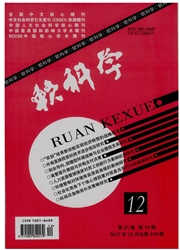

 中文摘要:
中文摘要:
基于1993-2013年中国居民消费的时间序列数据,构建居民能源需求的LA-AIDS计量回归模型与能源效率仿真模型,实证分析了中国城镇和农村居民能源消费的回弹效应;根据Slutsky方程进一步分解出城镇与农村居民能源消费直接与间接回弹效应。结果表明:中国居民能源消费存在明显的回弹效应,且城镇居民能源消费的回弹效应显著高于农村居民;城镇居民能源消费的回弹效应呈逐年下降趋势,农村居民能源消费的回弹效应呈逐年上升趋势,2013年之后表现为"回火效应";居民能源消费回弹效应的直接效应高于间接效应,即替代效应高于收入效应,说明中国居民能源消费的回弹效应主要是由于能源效率提高后居民增加了对能源的直接消费所导致的。
 英文摘要:
英文摘要:
Based on time series data of Chinese residential consumption from1993 to 2013,this paper construct residential energy demand LA-AIDS econometric model and energy efficiency simulation model,and empirically analyzed rebound effect of Chinese urban and rural residential energy consumption. Results showed that,the rebound effect of residential energy consumption in China was obvious,and the rebound effect of urban residential energy consumption was higher than that of residential energy consumption; the rebound Effect of urban residents showed a declining trend,while the rebound effect of rural residents showed an increasing trend,which performed a " tempering effect" after 2013; the direct rebound effect of residential energy consumption was higher than the indirect effect,which meant that the substitution effect was higher than the income effect,and it suggested that the rebound effect of residential energy consumption of in china was mainly due to increased residential direct energy consumption after the energy efficiency was improved.
 同期刊论文项目
同期刊论文项目
 同项目期刊论文
同项目期刊论文
 Comparative Study on Economic Contribution Rate of Education of China and Foreign Based on Soft Comp
Comparative Study on Economic Contribution Rate of Education of China and Foreign Based on Soft Comp 期刊信息
期刊信息
